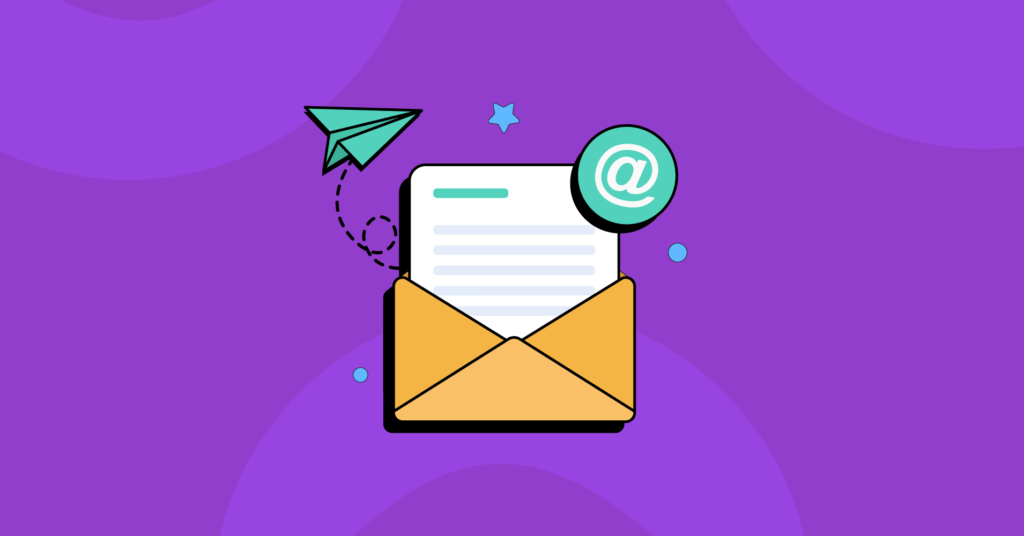Every professional knows the weight of an overflowing inbox. Entrepreneurs lose hours that should go to growth. Sales professionals miss timely follow-ups that could have sealed a deal. SMEs juggle high volumes with small teams and no margin for wasted effort. Large enterprises face challenges related to scale, compliance, and coordination. And in sensitive industries, an overlooked or mishandled email is more than inefficient; it is a liability.
Traditional filters and folders are no longer sufficient to solve the problem. What you need is smart inbox management powered by AI. These tools don’t just reduce clutter. They analyze intent, understand patterns, and predict what deserves your attention before you even ask. The shift is no longer about cleaning your inbox. It is about reshaping how communication supports your goals in 2025.
Rise of AI in Email Organization
AI is not an add-on to email anymore. It has become the core engine that drives focus, responsiveness, and productivity.
How AI Transforms Traditional Email Management
In the past, email management relied on rigid rules and manual input. AI has replaced this with dynamic systems that learn from behavior.
- Adaptive sorting: Instead of static folders, AI organizes based on relevance that evolves over time.
- Predictive prioritization: Messages are ranked by urgency, sender importance, and context, not just arrival time.
- Automated actioning: AI triggers workflows such as scheduling, reminders, or flagging compliance-sensitive content without manual setup.
This is why professionals report regaining up to five hours weekly with AI-driven inboxes.
The Importance of AI in Tackling Inbox Overload in 2025
Email is still the most used business communication channel, but its complexity has outpaced human management.
- Volume spike: By 2025, global daily email traffic is projected to exceed 392 billion messages.
- Speed pressure: Business clients now expect responses in hours, not days.
- Hybrid ecosystems: Inboxes serve as the bridge between chats, CRMs, task boards, and compliance systems.
- Cognitive fatigue: Sorting through endless notifications leads to decision burnout and slower execution.
AI is not simply solving for scale. It is solving for human limits.
Key AI Technologies Powering Email Organization
| Technology | Real Application | Why It Matters in 2025 |
| Machine Learning | Learns patterns of which senders and topics you act on | Delivers precision prioritization tailored to you |
| Natural Language Processing (NLP) | Detects sentiment, intent, and urgency in content | Surfaces urgent tasks hidden in long threads |
| Predictive Analytics | Anticipates which deals, deadlines, or compliance issues need action | Prevents risks and missed opportunities |
| Contextual AI | Links emails with calendars, tasks, and CRM data | Creates a unified workflow hub inside your inbox |
Essential Features Defining Top AI Email Organization Tools
In 2025, the best AI email tools go beyond automation, combining speed, security, and collaboration. They cut effort, boost accuracy, and help individuals and teams manage inboxes with confidence.
- Smart Inbox Prioritization and Automated Categorization
AI no longer just separates promotions from work mail. It now predicts which emails align with your key objectives. For instance, if a sales lead responds after weeks of silence, the system elevates that thread above routine updates. This level of dynamic categorization ensures nothing important gets lost in the noise.
- Contextual Draft Suggestions and Reply Automation
Modern AI tools generate drafts that reflect context, tone, and urgency. Instead of generic canned responses, they understand whether you are replying to a client negotiation or a compliance query. This is where natural language processing has matured—producing drafts that sound like you, not a machine.
- Seamless Integration with Work Systems
In 2025, integration is not optional. The most effective tools connect directly with calendars, task managers, and CRMs. When an email requests a meeting, AI books it instantly. When a client raises an issue, the system updates the CRM without human input. This fluid connection between systems cuts manual data entry and reduces errors.
- Privacy-Focused AI and Data Security
Professionals in sensitive industries need assurance that automation does not equal exposure. On-device processing and zero-retention policies are becoming standard. Emails can now be classified, triaged, and encrypted without leaving your device or breaching compliance frameworks like GDPR or HIPAA.
- Cross-Platform Accessibility
A professional’s inbox is not tied to one device. AI-driven organizers now offer seamless continuity across desktop, mobile, and tablet, syncing priorities and drafts in real time. This is particularly valuable for leaders who manage workflows on the move.
Detailed Profiles of Leading AI Email Organization Tools in 2025
The market in 2025 is crowded with AI-driven tools, but each has carved a niche. The following platforms stand out not because of feature lists but because of how they address specific needs—speed for entrepreneurs, scale for enterprises, privacy for regulated industries, and integration for sales-driven teams.
- Superhuman AI
Superhuman has long been known for speed, but in 2025 its AI layer has matured into something closer to a personal assistant than an email client. The system doesn’t just prioritize—it predicts. If a venture capitalist replies after weeks of silence, the tool recognizes the context and highlights the email instantly. Its predictive autocomplete goes beyond sentences, offering draft suggestions tailored to the specific relationship. For high-growth entrepreneurs and executives, this translates into sharper decision-making and faster deal cycles.
- Gmail Gemini AI
Google’s Gemini AI integrates tightly into Gmail and Workspace, making it the natural choice for SMEs and startups that already rely on Docs, Sheets, and Calendar. Its strength is context awareness within the Google ecosystem. Gemini does more than suggest replies—it generates project updates, links to recent documents, and even reminds you of unresolved threads based on shared work in Drive.
- Microsoft Outlook Copilot
Outlook Copilot leverages Microsoft’s depth across Teams, Word, and Excel. When an email arrives requesting a financial update, Copilot can surface the relevant Excel model instantly, draft a summary, and prepare a reply—all without leaving Outlook. For enterprises managing thousands of cross-departmental emails daily, this level of context-driven AI reduces wasted coordination time.
- SaneBox
Unlike tools built as new platforms, SaneBox layers onto existing email clients. It uses behavioral learning to categorize emails into “Later,” “News,” and “Important.” Its advantage lies in simplicity—it doesn’t attempt to replace your inbox but makes it usable again. Professionals who manage multiple inboxes across Gmail, Outlook, or IMAP find SaneBox’s cross-platform nature particularly valuable.
- Canary Mail AI
Canary’s focus is privacy. All AI processing happens on-device, meaning data never leaves your machine. This addresses one of the biggest barriers to adoption in industries like healthcare, finance, or legal, where compliance cannot be compromised. Canary pairs this privacy-first design with smart inbox features like focused views, AI-suggested replies, and end-to-end encryption.
- Boomerang AI
Boomerang is best known for scheduling and its “Inbox Pause” feature. The AI layer in 2025 now adds tone analysis, ensuring that emails read as confident, empathetic, or persuasive depending on the context. For sales professionals, this is invaluable. Timing plus tone can shift conversion outcomes, and Boomerang automates both.
- Hey Email AI
Hey disrupts the very structure of email. Instead of presenting a chronological inbox, it applies AI-powered screening at entry. Messages are categorized before they ever reach your main view, with AI drafting natural replies to common requests. For professionals open to rethinking email norms, Hey offers an uncluttered, distraction-free workspace.
- Spark AI
Spark AI combines email with team collaboration. Beyond smart prioritization, it allows comments on emails, shared drafts, and task assignments directly in the inbox. For SMEs and startups, this creates a unified hub where communication and action stay linked. The AI layer ensures important team-wide threads never sink into obscurity.
- Mailbutler AI
Mailbutler is built as a plugin for Gmail and Outlook, which makes adoption seamless. Its AI features extend email into CRM territory. Automatic logging, sentiment analysis, and follow-up reminders ensure client communications don’t fall through the cracks. For consultants and account managers, this means less manual admin and more client time.
Choosing the Right AI Email Organizer for Your Workflow
The right AI tool depends less on the size of your inbox and more on your workflow, budget, and compliance needs. Here’s how to make the decision without trial-and-error fatigue.
Step 1: Assess Your Email Volume and Complexity
- Entrepreneurs and small teams: High email volume but limited resources. Need tools that prioritize speed and affordability.
- Large enterprises: Multiple departments, compliance oversight, and integration demands. Require full ecosystem tools like Outlook Copilot.
- Sensitive industries: Privacy-first workflows. Tools like Canary Mail AI are essential.
Step 2: Balance Feature Depth vs. Ease of Use
Sophisticated tools deliver incredible value but can slow adoption if teams resist change. For solo founders, Superhuman or Gmail Gemini works best because of the shallow learning curve. For enterprise adoption, training budgets should be factored in when deploying Copilot.
Step 3: Evaluate Privacy and Compliance
Data security is not negotiable in 2025. Look closely at where processing happens.
- On-device AI: Canary Mail for regulated industries.
- Cloud-native AI: Gmail Gemini and Spark AI, which balance ease with affordability but may not satisfy strict compliance.
Step 4: Consider ROI and Value
Subscription costs vary widely. Superhuman is premium. SaneBox is affordable but limited. Mailbutler fills CRM gaps without requiring a separate license. ROI should be calculated in terms of time saved and opportunities recovered, not just subscription price.
Comparison Matrix: Matching Tools to Needs
| Profile | Recommended Tools | Why They Fit in 2025 |
| Entrepreneurs / Executives | Superhuman AI, Hey AI | Fast workflows, minimal clutter, rapid prioritization |
| Sales Professionals | Boomerang AI, Mailbutler AI | Timing, tone analysis, CRM-ready insights |
| SMEs / Startups | Gmail Gemini AI, Spark AI | Affordable, ecosystem-driven, team collaboration support |
| Large Enterprises | Microsoft Outlook Copilot | Ecosystem integration, compliance oversight, scalability |
| Sensitive Industries | Canary Mail AI | On-device AI, end-to-end encryption, compliance assurance |
| Cross-platform Professionals | SaneBox | Works across multiple inboxes without disruption |
Conclusion
Email isn’t going away—it’s getting smarter. AI transforms the inbox from a drain into a driver of growth, efficiency, and compliance. For entrepreneurs it means time reclaimed, for sales faster closing, for SMEs affordable scale, for enterprises global control, and for regulated industries, built-in compliance. The smartest move in 2025 is to experiment: test, measure, refine. With the right balance of AI and human judgment, your inbox finally works for you.



